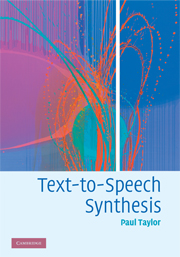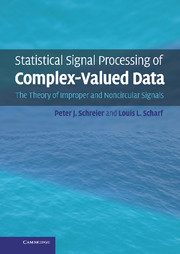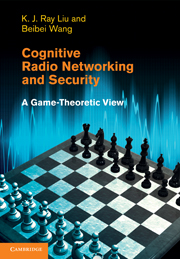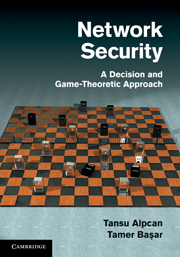Refine search
Actions for selected content:
6790 results in Communications and signal processing
15 - Theories for buffering and scheduling in Internet switches
- from Part IV - Theory and models
-
-
- Book:
- Next-Generation Internet
- Published online:
- 05 October 2012
- Print publication:
- 03 February 2011, pp 303-323
-
- Chapter
- Export citation
14 - KanseiGenie: software infrastructure for resource management and programmability of wireless sensor network fabrics
- from Part III - Protocols and practice
-
-
- Book:
- Next-Generation Internet
- Published online:
- 05 October 2012
- Print publication:
- 03 February 2011, pp 275-300
-
- Chapter
- Export citation
Contents
-
- Book:
- Next-Generation Internet
- Published online:
- 05 October 2012
- Print publication:
- 03 February 2011, pp vii-xv
-
- Chapter
- Export citation
5 - Grid networking
- from Part I - Enabling technologies
-
-
- Book:
- Next-Generation Internet
- Published online:
- 05 October 2012
- Print publication:
- 03 February 2011, pp 88-104
-
- Chapter
- Export citation
12 - Multi-path BGP: motivations and solutions
- from Part III - Protocols and practice
-
-
- Book:
- Next-Generation Internet
- Published online:
- 05 October 2012
- Print publication:
- 03 February 2011, pp 238-256
-
- Chapter
- Export citation
11 - Separating routing policy from mechanism in the network layer
- from Part III - Protocols and practice
-
-
- Book:
- Next-Generation Internet
- Published online:
- 05 October 2012
- Print publication:
- 03 February 2011, pp 219-237
-
- Chapter
- Export citation
8 - PHAROS: an architecture for next-generation core optical networks
- from Part II - Network architectures
-
-
- Book:
- Next-Generation Internet
- Published online:
- 05 October 2012
- Print publication:
- 03 February 2011, pp 154-178
-
- Chapter
- Export citation
13 - Explicit congestion control: charging, fairness, and admission management
- from Part III - Protocols and practice
-
-
- Book:
- Next-Generation Internet
- Published online:
- 05 October 2012
- Print publication:
- 03 February 2011, pp 257-274
-
- Chapter
- Export citation

Text-to-Speech Synthesis
-
- Published online:
- 25 January 2011
- Print publication:
- 19 February 2009

Statistical Signal Processing of Complex-Valued Data
- The Theory of Improper and Noncircular Signals
-
- Published online:
- 25 January 2011
- Print publication:
- 04 February 2010

Cognitive Radio Networking and Security
- A Game-Theoretic View
-
- Published online:
- 06 December 2010
- Print publication:
- 28 October 2010

Network Security
- A Decision and Game-Theoretic Approach
-
- Published online:
- 02 December 2010
- Print publication:
- 21 October 2010
9 - Polynomials with real coefficients
-
- Book:
- Graph Spectra for Complex Networks
- Published online:
- 01 March 2011
- Print publication:
- 02 December 2010, pp 263-312
-
- Chapter
- Export citation
7 - Spectra of complex networks
-
- Book:
- Graph Spectra for Complex Networks
- Published online:
- 01 March 2011
- Print publication:
- 02 December 2010, pp 179-208
-
- Chapter
- Export citation
8 - Eigensystem of a matrix
-
- Book:
- Graph Spectra for Complex Networks
- Published online:
- 01 March 2011
- Print publication:
- 02 December 2010, pp 211-262
-
- Chapter
- Export citation
5 - Spectra of special types of graphs
-
- Book:
- Graph Spectra for Complex Networks
- Published online:
- 01 March 2011
- Print publication:
- 02 December 2010, pp 115-158
-
- Chapter
- Export citation
Part II - Eigensystem and polynomials
-
- Book:
- Graph Spectra for Complex Networks
- Published online:
- 01 March 2011
- Print publication:
- 02 December 2010, pp 209-210
-
- Chapter
- Export citation
1 - Introduction
-
- Book:
- Graph Spectra for Complex Networks
- Published online:
- 01 March 2011
- Print publication:
- 02 December 2010, pp 1-10
-
- Chapter
- Export citation
Symbols
-
- Book:
- Graph Spectra for Complex Networks
- Published online:
- 01 March 2011
- Print publication:
- 02 December 2010, pp xv-xvi
-
- Chapter
- Export citation
Acknowledgements
-
- Book:
- Graph Spectra for Complex Networks
- Published online:
- 01 March 2011
- Print publication:
- 02 December 2010, pp xiii-xiv
-
- Chapter
- Export citation
